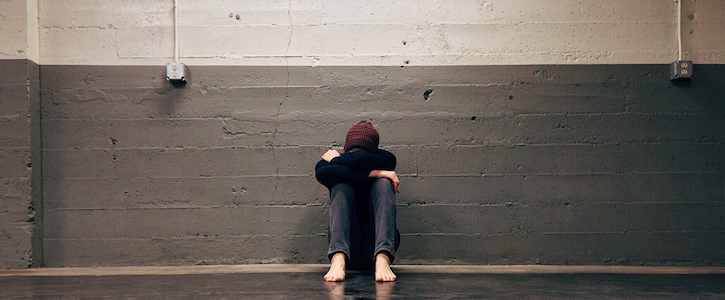Can eHealth Improve Teen Mental Illness? Look at the Data
Why behavioral health is ripe for digital health interventions.

Mental illness is often hard to define, particularly in hormonally challenged teenagers. Traditional methods of therapy require office visits during inconvenient hours, but the rise of eHealth offers an alternative that expands the options and potential for treatments.
>> READ: mHealth Might Solve Our Prisons’ Mental Health Problem
The word eHealth is one of the most common terms volleyed back and forth among medical professionals, but the meaning of it is still taking shape. The name came into popular use in the late ‘90s as a catchall phrase for everything encompassing technology and medicine, as well as medical services delivered via the internet. It encaptures digital health, mobile health and all things tech in the space.
But how can eHealth help patients with mental illness?
Why Is eHealth Needed?
The World Health Organization (WHO) is the latest major medical body to embrace eHealth. The WHO’s report “Global diffusion of eHealth: Making universal health coverage achievable” explores how eHealth enables universal health coverage among member nations.
The WHO finds that eHealth is a vital resource for making healthcare services accessible for everyone. It allows care providers to deliver services to remote and underserved populations. Using eHealth technology, care providers can deliver accurate and timely diagnoses. Furthermore, it facilitates medical training anywhere there’s access to the Internet.
eHealth and Teenage Mental Illness
As the eHealth field evolves, researchers are testing the effectiveness of the delivery method for treatment of conditions such as behavioral health problems. Their studies suggest that in-person and eHealth services are effective. Scientists forecast that behavioral health specialists can deliver the same level of service both in person and via eHealth technology.
The in-person trials were conducted with teenagers, while the eHealth trials were conducted with adults. Researchers believe, however, that they can achieve the same success with teenage patients. If so, the researchers claim, care providers will become empowered to treat a large number of teens who lack transportation or live in underserved rural areas.
What Are the Challenges of eHealth Programs?
Globally, access to reasonably priced and effective healthcare services is a major problem. However, it’s the opinion of healthcare advocates that government intervention in promoting eHealth initiatives can help care providers deliver greatly needed services.
In fact, the political climate is ripe for this transition. A 2015 WHO survey, for instance, revealed that 75 percent of member nations have created legislation or policies regarding eHealth initiatives. Furthermore, 80 percent of WHO member nations use social media for public health communications. eHealth technology may serve as a solution for national healthcare systems challenged by rising expenses and operational shortcomings, as well as access and treatment quality problems.
The Globalization of eHealth
Leading behavioral health specialists in the United States believe that the country is a global leader in mental health. Around the world, the climate surrounding behavioral health varies across time and cultures. For nearly the last half-decade, however, western medical leaders assertively communicated their perspectives on mental illness.
During these communications, western practitioners effectively reshaped the way the world thinks about behavioral health. Their communications have influenced the practices of other mental health professionals around the world and how practitioners view aberrant behavior. As clinical explanations of various mental illnesses are becoming more widely accepted, cultural explanations based on myths and superstition for behavior that strays from normal society are slowly and steadily fading.
Education: The Path Forward
Because of their hormonal changes, teenagers often seem emotional or moody. This can make it difficult for parents to differentiate between normal teenage behavior and emerging mental health issues. In fact, the National Alliance on Mental Illness (NAMI) reports that one in five teenagers struggle with a mental health condition — and less than half of that group seeks treatment.
This places teenagers who are experiencing mental health issues at considerable risk. When left unchecked, moderate behavioral health problems can spiral out of control into serious mental illness.
If a parent suspects that their child is having a behavioral health problem, they should find out as much information as they can as quickly as possible. For parents who need assistance helping their teens cope with behavioral problems, there are many online resources. In addition, there are numerous hotlines available for parents of teens — as well as for teens themselves — who are dealing with mental health issues. If these resources are not effective, the next step is to seek the assistance of a behavioral health specialist.
It’s often difficult to pinpoint behavioral health problems in others. For parents, education about behavioral health issues is an essential tool for identifying signs of mental illness in their children. By learning about the signs of mental illness and guiding teens toward proper treatment, parents can help their children manage behavioral health problems and live fulfilling and satisfying lives.
Health systems, meanwhile, can leverage eHealth platforms and programs to help treat teens who otherwise might not adhere to behavioral health treatments. eHealth technology can also help individuals who live in remote areas or, for whatever reason, cannot make it to the clinic. Although eHealth is still in its early days, it’s time for healthcare professionals and health systems to take the tech seriously — otherwise, our most vulnerable patients might go without treatment.
Nancy Goldwyn is nurse leader and health informatics specialist at Applied Nursing Research.
Get the best insights in healthcare analytics directly to your inbox.
Related
A New Tool Uses DNA to Predict Eye, Hair, Skin Color
Hunting for the Heart of a Changing Community
What Can Analytics Do to Stop Drug Diversion?